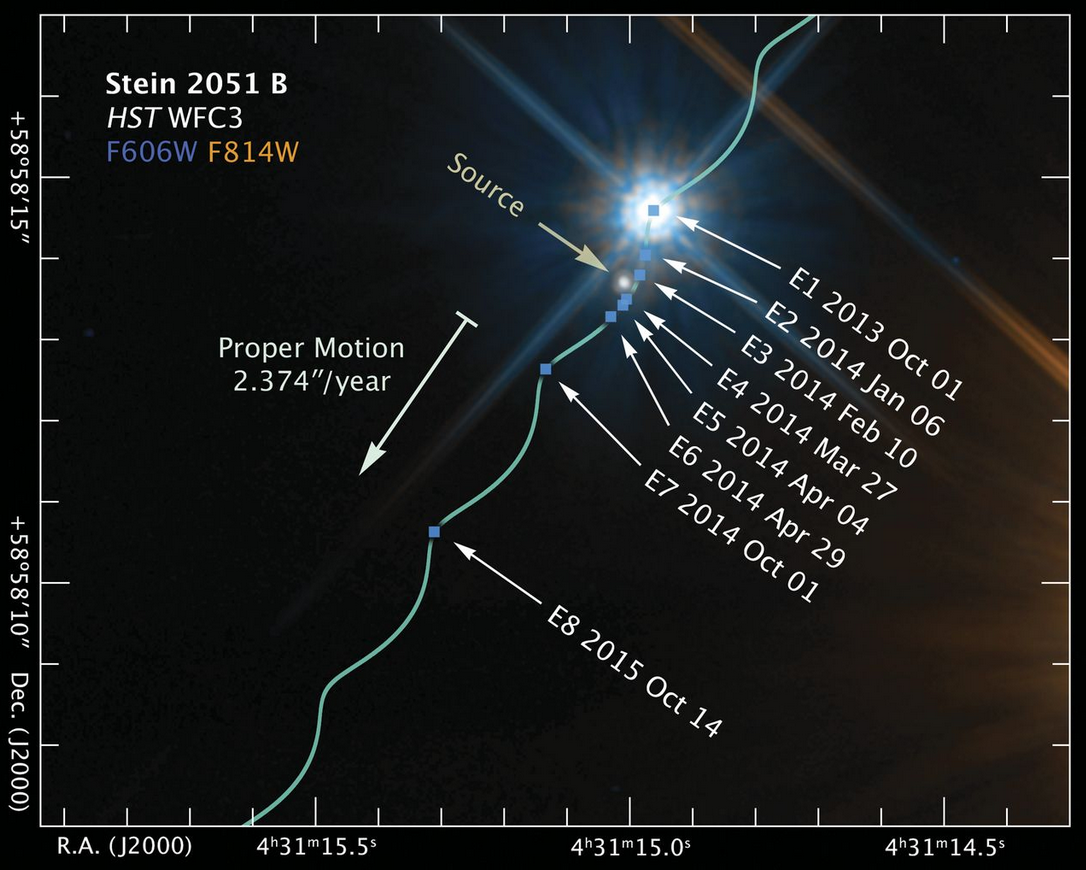
Written by Brian Santo, contributing writer
It has taken 80 years, but for the first time, astrophysicists have weighed a star using a technique that Albert Einstein declared would never be able to be implemented.
Researchers used the Hubble Space Telescope to add a technique that physicists can use to learn more about the history and evolution of the universe.
Ordinarily, when some Object A moves into perfect alignment between an observer and some distant Object B, A completely obscures B. All bets are off with massive objects at astronomical distances, however. If Object A is something incredibly massive, such as a star, and Object B is some astronomical distance away, A would bend the light from B around itself, a phenomenon called gravitational lensing.
There are different sub-categories of gravitational lensing. If the objects and observer are precisely aligned, the more distant Object B would appear as a ring around Object A (an “Einstein ring”). The slightest misalignment would make the more distant object appear to shift position; this is referred to as astrometric microlensing.
Einstein fit the notion of gravitational lensing into his theory of general relativity, published in 1915, and refined the math that describes the phenomenon. Observing it would demonstrate that his theory and his math were correct.
That set off a race to detect gravitational lensing. It was first observed in 1919 during a solar eclipse. The New York Times headline declared, “Lights All Askew In the Heavens ” and “Einstein Theory Triumphs.”
Astrometric lensing has been observed many times since, but each time, the lensing object was our own sun, and we’d already weighed the sun by other means. Mass is a factor in the formula that describes how gravity affects the orbits of proximate bodies, and those calculations had already been made for the objects in our solar system.
In the 1930s, Einstein was consulted on whether it might be possible to use gravitational lensing to weigh some distant star. Theoretically, yes, he concluded. It would require that the star being measured pass in front of some more distant object; the calculation would rely on measuring the shift in position of the more distant of the two. “Of course, there is no hope of observing this phenomenon directly,” he wrote in a letter to the journal Science in 1936. The likelihood of getting the proper alignment of objects was remote, and even if that happened, there were no sufficiently sensitive instruments to measure what would be a profoundly miniscule shift.
Einstein hadn’t heard about the Hubble Telescope.
A team led by Kailash C. Sahu recently aimed Hubble at a nearby white dwarf called Stein 2051 B as it passed in front of a distant star. They measured the tiny shifts in the apparent position of the background star and detected astrometric microlensing, becoming the first to do so using a star other than our own sun.
“The apparent motion matched the predictions of general relativity, which allowed the authors to determine the mass of the white dwarf” (Stein 2051 B), as they explained in the summary of the paper they published in Science .
Stein 2051 B is, as might be surmised from the name, one of a pair of binary stars. What made it a good candidate for the experiment is that, as the closest white dwarf to Sol, it is well-characterized.
The distances involved, and the fact that Stein 2051 B is a member of a binary, made the observation “challenging,” according to the researchers, but they’d determined that the measurement would be within Hubble’s capabilities.
Astrophysicists had long assumed that Stein 2051 B had an iron core, which is possible among white dwarves but still considered exotic. Sahu and his team determined that, given its mass, Stein 2051 B could not have an iron core; it was a typical white dwarf.
Terry Oswalt is a physicist with Embry-Riddle Aeronautical University in Florida. In an article in the same issue of Science, Oswalt wrote, “The astrometric lensing approach used by Sahu et al . can be used equally well for any other nearby stars that happen to pass in front of background stars. In the coming era of truly massive sky surveys such as the Large Synoptic Survey Telescope, astronomers are bound to observe other similar events, despite their rarity.”
Image Source: Science Magazine
Advertisement
Learn more about Electronic Products Magazine





